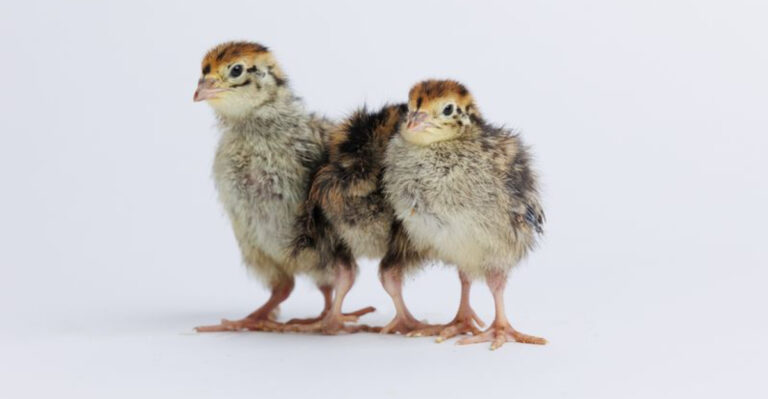15 Outdoor Places Felines Instinctively Avoid

Cats may seem fearless as they strut around their territory, but these curious creatures actually have strong natural aversions to certain outdoor spaces.
Our feline friends rely on their sharp instincts to keep them safe from potential dangers in the environment.
Understanding these no-go zones not only explains your cat’s behavior but can help you create a more comfortable outdoor experience for your whiskered companion.
1. Rushing Water Sources

Most domestic cats harbor a deep-seated aversion to fast-moving water. Rivers, streams, and other flowing water bodies trigger their survival instincts because cats recognize the drowning risk they pose.
Unlike their tiger cousins who enjoy swimming, house cats typically lack the same affinity for water. Their fur becomes waterlogged easily, making them feel vulnerable and uncomfortable.
This natural wariness serves as a protective mechanism that’s been passed down through generations of feline evolution. You’ll rarely spot a neighborhood cat voluntarily approaching rapids or waterfalls – they’ll typically observe from a safe distance.
2. Heavily Trafficked Roads
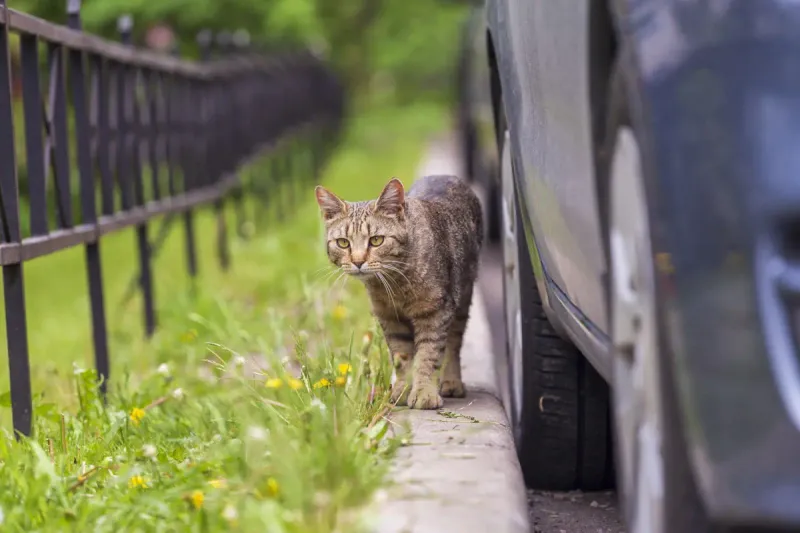
Smart cats understand that busy streets spell danger. They can detect the vibrations of approaching vehicles through their sensitive paw pads long before humans notice them.
Road surfaces also retain unpleasant chemical residues from vehicles that offend cats’ delicate sense of smell. The combination of noise, unpredictable movement, and strange odors creates an environment most felines actively avoid.
Even the boldest neighborhood cats typically establish territories that minimize road crossings. They’ll often wait patiently for quieter moments or find alternative routes that bypass high-traffic areas altogether.
3. Dog Parks

Feline instinct screams “danger zone” when approaching areas frequently visited by multiple dogs. The concentrated scent markers left by numerous canines signal to cats that they’re outnumbered in potential territory disputes.
The unpredictable, boisterous play style of dogs feels threatening to cats, who prefer calculated movements and quiet observation. Even the most dog-friendly cats typically steer clear of these chaotic spaces.
Dog parks also lack the vertical escape routes cats rely on for safety. Without trees or structures to climb when feeling threatened, these open areas leave cats feeling exposed and vulnerable – a sensation they instinctively avoid.
4. Recently Mowed Lawns

Fresh-cut grass releases chemicals that overwhelm a cat’s sensitive nose. These compounds, while pleasant to humans, can be irritating to felines who experience scents much more intensely than we do.
The sudden absence of taller grass also eliminates hiding spots cats rely on for security. Without coverage, they feel exposed to potential predators and will avoid crossing these open spaces until some regrowth occurs.
Mowing also disrupts the insect populations cats enjoy hunting and disturbs the carefully placed scent markers they use to define their territory. For these reasons, you’ll notice your neighborhood cats temporarily avoiding freshly mowed areas until nature begins to restore their comfort zone.
5. Citrus Gardens

Gardens featuring lemon, orange, or grapefruit trees create natural feline-free zones. Cats possess an instinctive aversion to citrus scents that’s so strong it borders on revulsion.
The oils in citrus peels contain compounds called limonene and linalool, which cats find genuinely offensive. Their noses are approximately 14 times more sensitive than ours, making these smells overwhelmingly unpleasant.
Even dried citrus peels scattered around garden beds will keep most cats at bay. This natural deterrent works so effectively that many cat-safe repellents incorporate citrus oils as their active ingredient – mimicking what nature already designed to keep felines away.
6. Areas With Predatory Birds

Locations frequented by hawks, owls, or eagles trigger a cat’s survival instincts. Cats recognize these birds as potential threats, especially to kittens or smaller adult cats.
You’ll notice felines becoming instantly alert when spotting these aerial predators, often freezing in place or seeking cover. Their eyes track the bird’s movement while their bodies remain motionless – a defense mechanism honed through generations.
Areas near nesting sites of predatory birds become permanent no-go zones for neighborhood cats. They’ll create alternative pathways through their territory to avoid these danger spots, sometimes traveling significantly farther to bypass locations where they’ve previously spotted these formidable birds.
7. Construction Sites

The unpredictable noises, strange smells, and constant human activity make construction areas particularly stressful for cats. Their sensitive hearing finds jackhammers and power tools physically painful.
Construction dust irritates their respiratory systems and coats their fur, disrupting their meticulous grooming routines. The chemical scents from building materials also clash with their sensitive noses.
Perhaps most importantly, construction constantly changes the physical landscape cats rely on for navigation and security. Felines create detailed mental maps of their territory, and construction sites continuously disrupt these critical reference points, making them fundamentally unsettling places that most cats actively avoid.
8. Smoking Areas

Zones where people frequently smoke become invisible boundaries most cats won’t cross. Tobacco smoke contains thousands of chemicals that assault a cat’s delicate olfactory system, creating genuine discomfort.
Beyond the active smoke, cigarette butts left behind contain concentrated nicotine residue that’s toxic to cats. Their instincts correctly identify these areas as potentially harmful.
Outdoor smoking areas also typically feature higher human traffic and unpredictable movements as people come and go. The combination of noxious scents, potential toxins, and irregular human activity creates a perfect storm of deterrents that keeps most felines far away from designated smoking spots.
9. Herb Gardens With Rue Or Lavender
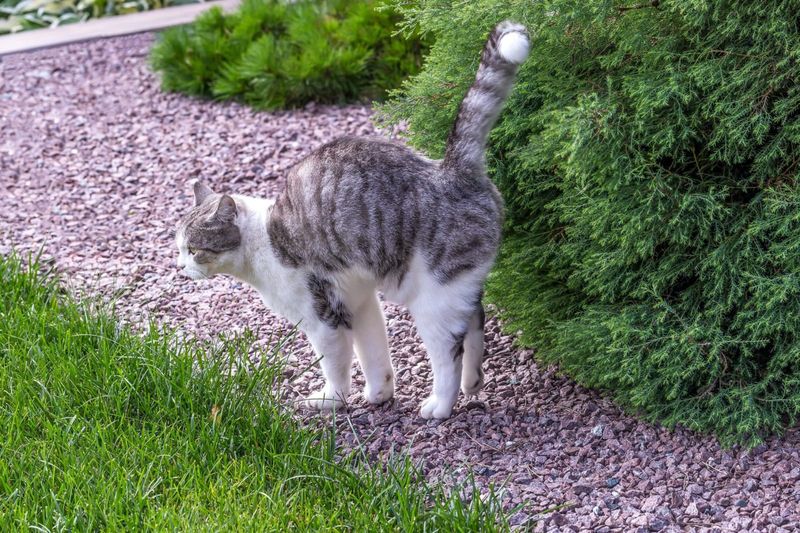
Certain aromatic herbs trigger strong avoidance behaviors in cats. Rue, lavender, rosemary, and pennyroyal contain natural oils that cats find particularly offensive.
These plants evolved these compounds specifically to deter hungry animals from eating them. For cats, the scent alone is enough to keep them at bay – no tasting required.
Herb gardens featuring these plants create natural boundaries cats rarely cross. Gardeners sometimes strategically plant these cat-deterrent herbs around vegetable patches or flowerbeds they want to protect. The cats’ aversion is so reliable that these aromatic borders effectively create “invisible fences” that most felines respect without any training.
10. Recently Sprayed Lawns
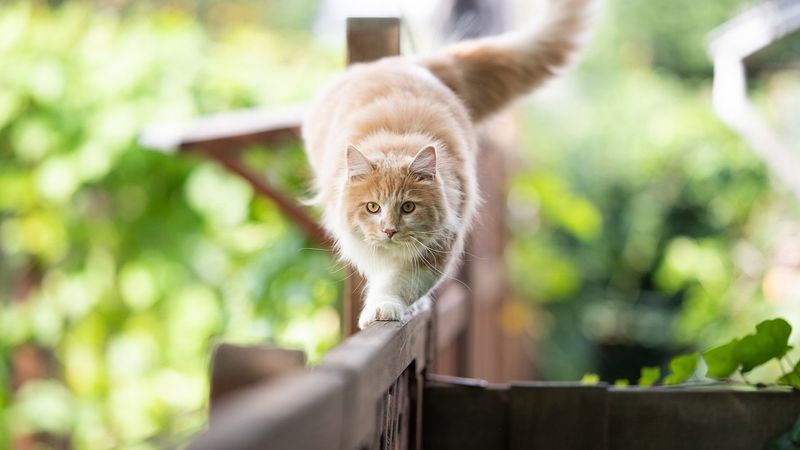
Cats detect chemical treatments on lawns long after the application has dried. Their sensitive paw pads absorb these substances, making recently treated grass genuinely uncomfortable to walk across.
Many lawn chemicals leave residues that taste bitter, interfering with a cat’s grooming routine. Since cats clean their paws after walking, they instinctively avoid surfaces that would force them to ingest unpleasant substances.
Smart felines also connect the unusual chemical scent with the absence of insects and small prey animals that normally inhabit healthy grass. This lack of hunting opportunities further reinforces their avoidance of treated areas, sometimes for weeks after application.
11. Gravel Or Sharp Stone Paths

Walking on gravel creates an uncomfortable sensation for cats’ sensitive paw pads. The shifting, uneven surface makes it difficult for them to move with their preferred silent grace.
Sharp-edged landscaping stones pose a genuine risk of cuts and abrasions to delicate paws. Cats quickly learn to avoid these potentially painful surfaces after just one or two uncomfortable experiences.
Gravel also retains heat differently than natural ground, becoming uncomfortably hot in summer and retaining cold in winter. This temperature variation adds another layer of discomfort that reinforces cats’ natural avoidance of these artificial pathways.
12. Areas With Snake Activity

Cats possess an innate ability to detect the presence of snakes through scent and subtle environmental cues. They’ll actively avoid locations where they’ve sensed snake activity, even if they’ve never directly encountered one.
The distinctive odor snakes leave behind triggers ancient survival instincts in felines. This avoidance behavior is particularly pronounced in areas with venomous snake species.
Observant cat owners might notice their pets suddenly refusing to explore previously favorite spots – often this indicates the cat has detected a snake’s presence that humans missed. Their superior senses and evolutionary programming help protect them from potentially deadly encounters with these reptilian predators.
13. Areas With Loud Machinery
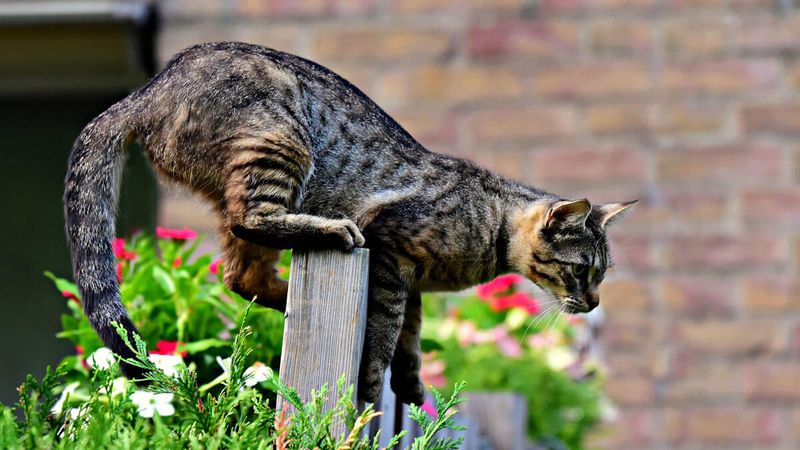
Locations where lawn mowers, leaf blowers, or other noisy equipment operate regularly become permanent no-go zones for most cats. Their hearing is significantly more sensitive than ours, making these sounds physically painful.
Cats can detect the high-frequency components of machinery that human ears miss completely. These ultrasonic elements are particularly distressing to their auditory system.
The unpredictable movement patterns of machines also trigger predator-avoidance responses in cats. Unlike natural threats that follow predictable behavior patterns, machinery moves in ways cats find impossible to anticipate, creating stress and prompting them to establish boundaries that keep these mechanical monsters at a safe distance.
14. Freshly Painted Or Stained Surfaces
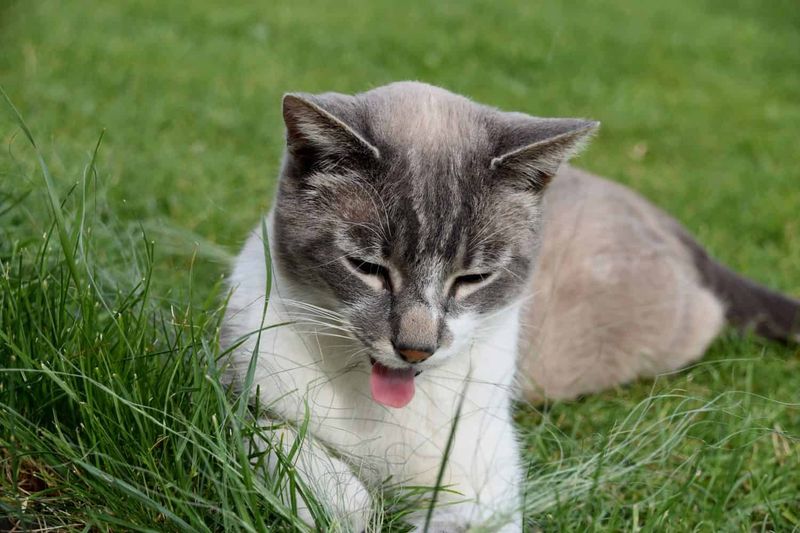
The strong chemical scents emitted by paint, stain, and sealants overwhelm a cat’s sensitive nose. These volatile organic compounds can cause respiratory irritation and discomfort for felines.
Cats also recognize that these substances could contaminate their fur during contact. Their meticulous grooming habits mean they avoid anything that might force them to ingest potentially toxic substances during cleaning.
The unusual appearance of newly painted surfaces also triggers caution in cats, who rely heavily on visual familiarity when navigating their territory. The combination of strange smells and altered appearance creates a powerful deterrent that keeps cats away until the chemicals have fully cured and the scent has dissipated.
15. Compost Piles And Bins
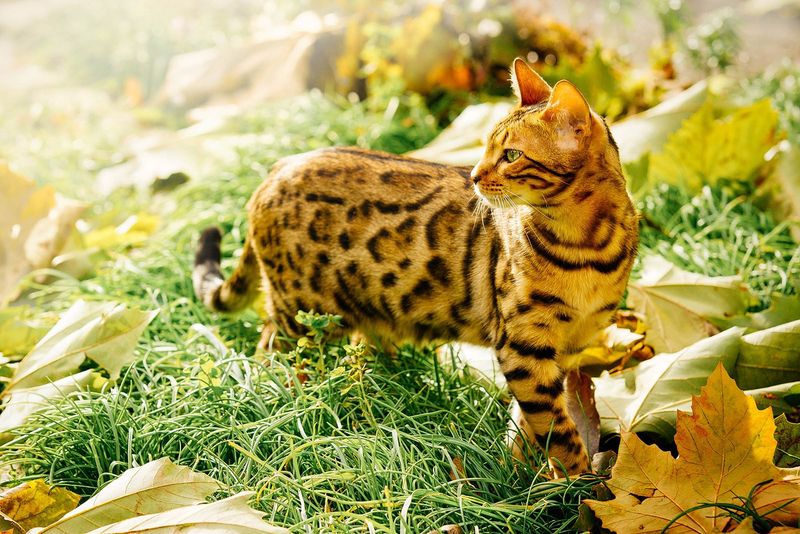
While cats are attracted to many garden areas, active compost piles trigger their avoidance instincts. The complex mix of decomposition odors contains ammonia and other compounds cats find genuinely repulsive.
The unstable, shifting surface of compost materials also feels unsafe underfoot. Cats prefer solid, predictable surfaces where they can move with confidence and silence.
Decomposing matter attracts insects and organisms that create unpredictable movement within the pile. This random activity triggers a cat’s predator-avoidance response, as they cannot determine if something dangerous might emerge from the constantly shifting material.

